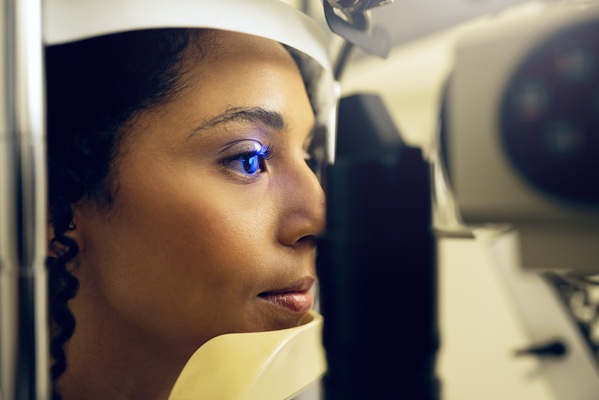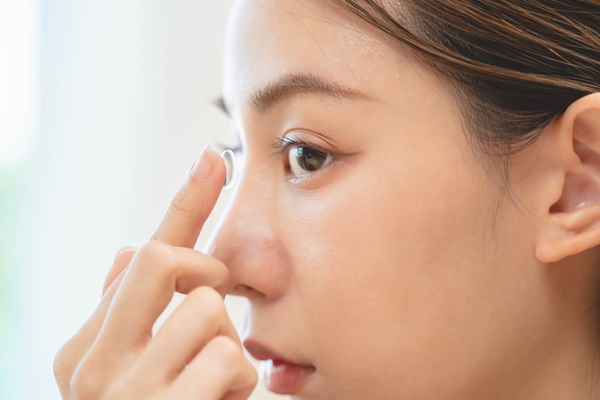What to Expect During a Diabetic Eye Exam

A diabetic eye exam is important for every person with diabetes. It is an eye exam providing complete details of the eye structures this chronic condition affects. Having an eye exam specific to your condition can establish a good treatment plan. Understanding what to expect during your upcoming diabetic eye exam can help you prepare better. Here are the details.
Visual acuity test
The eye care provider will check the patient’s visual acuity by using an eye chart. Diabetes causes retinopathy. It deteriorates the tiny blood vessels providing blood to the eyes. This can result in many changes in the patient’s eyes. It can affect the clarity of the patient’s vision. That is why a visual acuity test is essential in a diabetic eye exam.
A reduced eye acuity may lead to refraction. This test’s aim is to see if the patient’s eyeglasses prescription has changed. The eye check will give way to the testing of new lenses. The visual acuity test will result in new prescription glasses.
Pupil dilation
Dilating eye drops are often present in a diabetic eye exam. This helps enlarge the diabetic patient’s pupils for a short while. This removes the eye’s natural reaction to light. The pupil dilation allows the eye doctor to see into the back of the eye to check the fundus of the retina. It will allow the eye doctor to spot any retinal damage from diabetes.
Eye-dilating eye drops will start dilating the patient’s pupils after about 20 minutes. This will happen while waiting in the reception area. The dilation will last for two to three hours. Wearing dark sunglasses after the diabetic eye exam is practical. Doing so will protect the eyes from overexposure to light.
Someone will need to drive the patient home because of this. The eye care provider can offer disposable sunglasses after the diabetic eye exam. The patient could throw the glasses away upon reaching home. Most patients prefer to nap off the effects of the dilation drops.
Glaucoma test
Studies show that glaucoma is one of the main causes of blindness. Diabetic retinopathy increases a diabetic patient’s risk of developing glaucoma. This is the reason behind a glaucoma test during a diabetic eye exam. This test involves measuring the pressure inside the eyes.
Fundoscopy
This is an imaging test for the back of the eye. The eye doctor will check if the retina is healthy. Examining the fundus can happen with specific procedures or instruments. An indirect ophthalmoscope can give the eye doctor a wider view of the back of the eye or retina.
The eye doctor can also use a direct ophthalmoscope. This is a hand-held instrument with a bright light. It allows the eye care provider to see the back of the eye. A slit lamp ophthalmoscopy uses a slit lamp during the diabetic eye exam. This provides a close, 3D view of the optic nerve, retina, and retinal blood vessels.
Treatment for early diabetic retinopathy
A mild or moderate type of diabetic retinopathy may not need immediate treatment. The eye doctor will keep an eye on the patient’s eyes to see when treatment will be necessary. Managing diabetes can help slow down this eye condition’s progress. Working with the eye doctor can help improve the patient’s eye and general health.
Treatment for advanced diabetic retinopathy
This is also known as macular edema. The patient will need eye injections. This will help stop new blood vessels from growing. It will also decrease the buildup of fluids in the eye. The patient will need a local anesthetic first before taking this injection.
Photocoagulation is laser treatment. Its aim is to stop or delay fluid or blood leakage in the eyes. Laser burns will treat abnormal blood vessels. The treatment will only prevent the macular edema from worsening.
Panretinal photocoagulation is a laser treatment capable of shrinking abnormal blood vessels. The new blood vessels will shrink down. These vessels will also scar and seal from the scattered laser burns. Vitrectomy involves making a tiny incision into the eye to remove blood from the middle part of the eye. It also removes the scar tissue that pulls on the retina.
A diabetic eye exam will help catch any eye and vision issues in diabetic patients
Diabetes is a chronic disease. It affects many of the body’s organ systems and basic senses. Having a diabetic eye exam can help you go through the different changes related to the disease. Seeing your eye care provider for regular eye checks can help improve your ocular health.
Get more information about Texas Optical in Dallas at https://www.texasoptical.net.
Check out what others are saying about our services on Yelp: Read our Yelp reviews.
Recent Posts
For those living with diabetes, undergoing a diabetic eye exam is one of the most important steps in protecting their vision and overall eye health. High blood sugar levels can lead to a range of complications, including conditions that damage the eyes over time. These exams help detect these issues before they become serious, allowing…
Contact lenses provide clear vision and convenience for individuals who prefer an alternative to eyeglasses. However, proper care and maintenance are essential to prevent infections, irritation, and eye damage. Neglecting hygiene practices can lead to serious eye conditions, including corneal ulcers and keratitis. Understanding how to clean, store, and handle contact lenses ensures long-term eye…
Maintaining eye health and preventing long-term issues is the result of consistent and quality vision care. Many people focus on overall wellness but may overlook daily habits that support healthy eyesight. However, taking simple steps each day can protect vision, reduce eye strain, and prevent future complications. By making eye health a priority, it is…
Prescription contacts provide vision correction, comfort, and convenience for those who do not want to wear glasses. However, caring for and wearing contacts takes some getting used to. Learning to insert, remove, and maintain them will help ensure a comfortable and safe experience.Not all contact lenses are the same, and choosing the right pair is…


